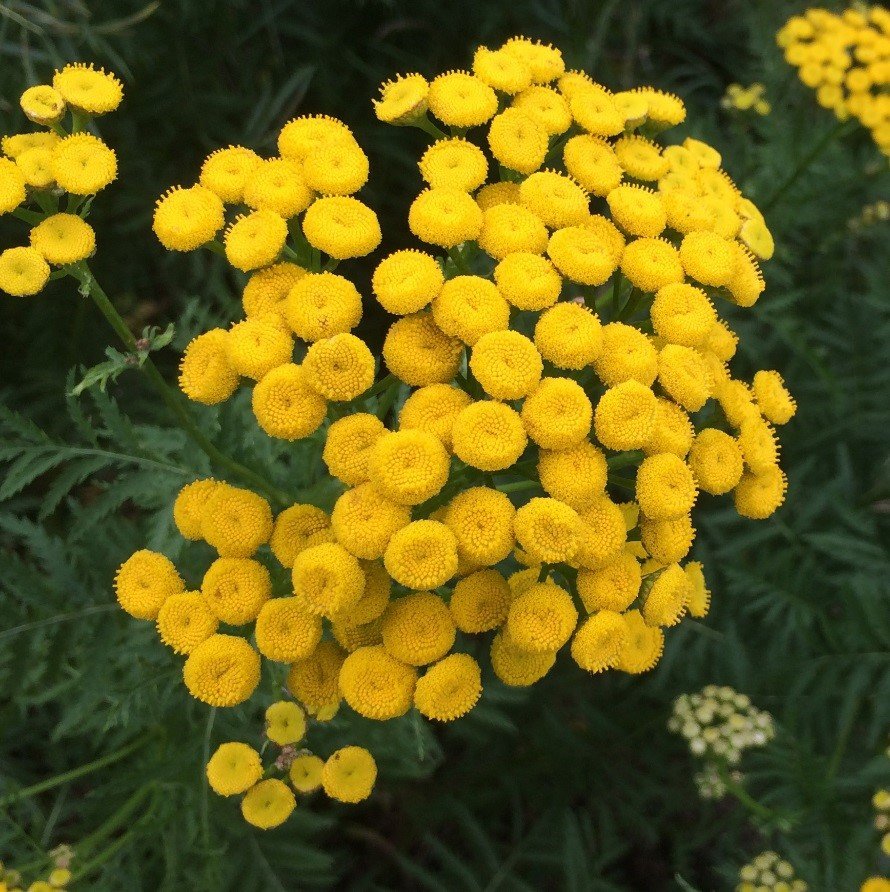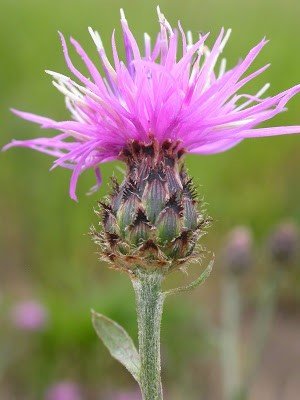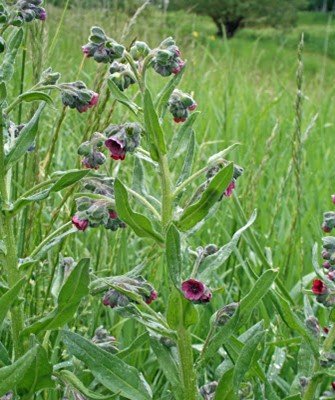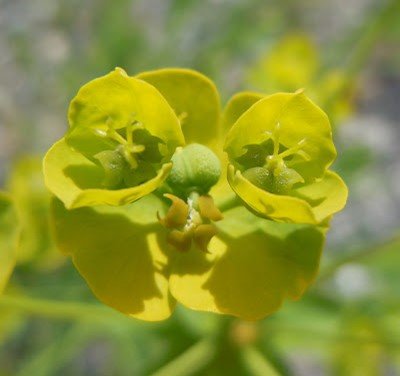Impacts of Juniper Encroachment
/Whitney Tilt, Conservation Chatter, June 2017.
Rocky Mountain Juniper commonly grow to be more than 250 years old, and specimens over 1,000 years old have been found. The species’ resinous branches and thin bark make them susceptible to wildfire which historically relegated them to rocky, marginal soils. Decades of fire suppression, however, has enabled Rocky Mountain junipers to spread into grasslands and sagebrush-steppe habitats. Townsend’s Solitaire, waxwings, and other bird species consume the fruit (seed cones) as do mammals such as bighorn sheep. The passing of berries through the animals’ digestive tracts dissolves the fleshy coating and enables germination of the seeds. Juniper has long been prized for use as fenceposts for their durability, though the practice is less common today except where posts are hand-dug. The aromatic wood is also used for wood clips and hand-made furniture. Best known for flavoring gin, the berries also have a long history of traditional medicinal uses.
Juniper encroachment into otherwise treeless shrub lands and grasslands is one of the most pronounced environmental changes observed in rangelands of western North America in recent decades. This encroachment affects forage production for livestock and wildlife, soils, plant community composition, and water, nutrient and fire cycles.
Historical Perspective
The shrub-steppe and grasslands of southwest Montana evolved to withstand periodic fire. Before European settlement, species of juniper (predominantly the Rocky Mountain Juniper, Juniperus scopulorum) were found in isolated pockets where fire impacts were minimized. A rangeland ecologist looking for old juniper trees would go to sites with shallow soils and limited understory capable of carrying fire. In the 1880s, the introduction of cattle and consequent heavy grazing led to a decrease in the number of wildfires annually. Cattle cropped most of the grasses that normally became fuel for wildfires. With reduced fire, juniper woodlands began expanding into areas once dominated by sagebrush and aspen. The fire suppression policies of the 20th century also aided the spread of juniper. Today a drier, hotter climate combined with limited opportunities to use prescribed fire, or even allow wildfires to run their course, have further accelerated the expansion of juniper woodlands.
Generalized Effects of Juniper Encroachment
High percentage of rain and snow intercepted in the juniper canopy (in Oregon, found to be equivalent to the percentage of juniper canopy cover; e.g., a juniper canopy of 20 percent equates to an interception of about 20 percent of the precipitation the site receives).
Precipitation through-fall (water reaching the soil surface through the tree canopy) generally occurs only after rain events of 0.30 inches or more.
Increasing juniper dominance is collated to a reduction or die-off of aspen (Populus tremuloides), shrubs, native grasses, and forbs (non-woody broad-leaf plants); a subsequent loss of forage for livestock; and a loss of habitat value (cover, forage) for many wildlife species.
As a conifer, juniper is capable of drawing water from the soil year-round, with impacts on native shrubs, perennial grasses, and forbs that depend on soil water stored during the dormant period (fall, winter, and early spring) for initiation of growth in the spring.
Canopy interception, diminished infiltration rates, overland flow, and increased juniper transpiration (the consumption of stored soil water) can result in a significant reduction of flows from seeps, springs, and streams.
Example of juniper encroaching on pasture. Note variations in size and form. MSGR Pasture (Park County MT, November 2016).
A Fierce Competitor
Juniper is a drought-tolerant evergreen with extensive lateral and deep roots, and the ability to extract water from very dry soil, in part due to a dense mat of fibrous roots at the soil surface. Its deep root system also gives them access to water that herbaceous species cannot effectively tap. These adaptations make juniper a successful competitor for water against grass and forbs, both underneath the canopy and in-between trees. Numerous studies have documented the impacts of juniper-induced reduction in light, soil moisture, and soil nutrients resulting in significant reductions in grass production due to increased juniper density.
As juniper roots expand into the interspaces between trees they compete for water and nutrients with grasses and forbs. This competition, especially when combined with grazing pressure, results in grasses that are sparse, lack vigor and difficult to reestablish in the continued presence of juniper. Another competitive advantage of juniper is that it is not as quickly affected by drought as herbaceous species because the trees have a deep root system which gives them access to a water source that the herbaceous species cannot effectively tap.
Junipers commonly arise from multiple stems making hand removal a challenge.
Impacts to Rangeland
As juniper come to dominate a site and form dense stands, they commonly outcompete understory plants for nutrients, water, and sunlight forming areas of bare soil between trees and exacerbating soil erosion.
Increased dominance of juniper in what had previously been grasslands alters the water cycle on rangelands. This has very important ramifications because water is a direct or indirect limiting factor to all aspects of production on semi-arid regions. The impact of juniper encroachment on recharge of streams and aquifers is also a very important consideration.
An increase of juniper cover on rangeland can reduce the amount of precipitation that reaches the soil surface. The extent to which the type of canopy cover influences the amount of precipitation that reaches mineral soil varies from species to species. Interception rates for RM Juniper were not found but other species commonly capture 25-38% of gross precipitation. In the case of small rainfall events (<5mm), water may not even reach the litter layer because of water retention by the foliage. In a dry environment, much of the canopy-stored water is subject to evaporation.
Water that passes through the canopy (through-fall) must also pass through the litter layer prior to entering the soil. The deposition of leaves, twigs, and branches, coupled with the absence of fire and the resistant nature of the litter to decomposition results in a large accumulation of litter under juniper trees. This litter has a high capacity to retain water falling through the tree canopy. The amount of interception loss associated with the litter layer varies considerably among juniper species (2-40%).
As a result of interception loss via the canopy and litter, a significantly reduced amount of water (20-60%) from annual rainfall reaches mineral soil under juniper. This is a stark contrast to the 80-90% of annual precipitation that reaches the soil under bunchgrass cover.
Research also suggests that the water channeled to the base of juniper via stem-flow (water that runs down the tree stems/truck) may competitively favor the growth and further establishment of juniper species, especially in semi-arid areas.
Water Hog
Evapotranspiration in semi-arid environments accounts for 80% or more of water loss. While the micro-climate under the canopy of trees and shrubs tends to reduce evaporation from the soil surface (due to shading and protection from wind, etc.), the interspaces between juniper, where severe competition between juniper and herbaceous plants results in barer, more exposed, ground, evaporation from the soil will be greater as compared to areas where good herbaceous cover exists. Additionally, juniper vegetation and litter provides much more surface area for water to adhere on than grass, therefore a much greater percentage of precipitation will be lost to evaporation in a juniper woodland than in a grassland.
The extensive root system of juniper allows it to access a greater volume of soil water than grasses and forbs. As an evergreen, it also has the capability to transpire water year-round. And it can continue to remove water from the soil long after grasses have gone into a drought or temperature-induced dormancy.
Litter Zone and Water Infiltration
On one hand, the litter layer markedly reduces the amount of water reaching mineral soil. On the other, it contributes to improved soil structure due to the large amounts of organic matter and cover which increases the infiltration rate capacity of the soil. The thick litter layer often associated with juniper also minimizes evaporation loss from soil below the canopy and can help obstruct runoff originating in the interspace areas. The juniper can utilize this water, giving the tree a further competitive advantage. This also explains why runoff yield from a pasture may not change as juniper density increases.
When juniper is cut and removed, the soil structure, and the associated high infiltration rate, may be maintained for subsequent years. The area near the dripline commonly exhibits substantially greater forage production for many years after the tree has been cut. It also explains why runoff will not necessarily dramatically increase once juniper is removed. Rather, the water continues to infiltrate at high rates into soils previously ameliorated by junipers, thereby increasing deep drainage potential.
Impact to Water Cycle
As mentioned, Juniper has the potential to impact the water cycle in a number of ways: specifically 1) a large portion of precipitation never reaches the soil due to interception loss, and 2) juniper extracts much of the water that does enter the soil to meet its needs.
The combination of less water entering the soil and strong ability by the juniper to extract water from dry soils translates into significantly less water seeping beneath the root zone. Therefore, invasion of juniper on large areas that were once primarily grassland has strong implications for recharge of aquifers. In the Edwards Plateau of Texas, seeps and springs have been documented to stop flowing in conjunction with increases in juniper cover.
Erosion Potential
Semi-arid rangelands have erosion rates which depend on the interactions of vegetation, soil, and weather events. Because juniper canopies are dense, they protect the soil directly beneath from raindrop impact and prevent detachment of soil particles. The heavy litter layer underneath juniper also impedes overland flow, thus reducing the transport capacity for sediment. But because juniper is highly competitive with interspace grasses, an increase in juniper cover often leads to increased exposure of bare soil. Any time bare soil is exposed, the potential for erosion is increased.
Anticipated Benefits of Treatment
Reducing the density and distribution of juniper on rangelands has the potential to:
Reduce the interception of precipitation, resulting in more water delivered to the ground surface.
Increase available forage for livestock grazing, and encourage reestablishment of grasses, forbs, and shrubs where juniper competition for space, sunlight, soil water, and soil nutrients has diminished plant community diversity, density, and productivity.
Encourage significant increases of herbaceous, deciduous, and semi-deciduous plant cover, reducing the amount of bare soil, increasing surface litter and soil organic matter, improving infiltration of rainfall and snowmelt, reducing overland flow and soil erosion, and increasing soil water retention.
Reduce dormant and early-growing-season transpiration and increase amount of soil water available to shrub and/or herbaceous plants for initiation of growth in the spring.
Considerations
Juniper management is not juniper eradication. Managers should look to retain old-growth juniper trees and thickets in draws and other areas where they provide shelter and food for wildlife.
Noxious weeds present on-site before treatment will take advantage of the newly available water, nutrients, space, and sunlight.
Experts warn against attempting to predict changes in surface water yield (seep, spring, and stream flow) that may result as a result of the treatment. Soil conditions and surface and bedrock geology are too variable to permit reliable forecasts. The project should be able to stand alone on the sustainable recovery and/or maintenance of basic ecological functions and processes and their associated environmental and economic benefits.
Figures 4 & 5. Before/After Treatment of large, multi-stemmed RM juniper. Difficult and time consuming to access stems, many of which are actually in/below the soil. (Park County, MT, November 2016)
Resources
Barrett, H. 2007. Western Juniper Management, A Field Guide. Oregon Watershed Enhancement Board.
Miller RF, Bates JD, Svejcar TJ, Pierson FB, Eddleman LE. 2005. Biology, Ecology and Management of Western Juniper. Technical Bulletin 152. OSU, Agricultural Experiment Station. Corvallis, OR.
Thurow, T.L. and J.W. Hester. How an increase or reduction in juniper cover alters rangeland hydrology. Texas A&M (texnat.tamu.edu















